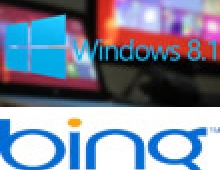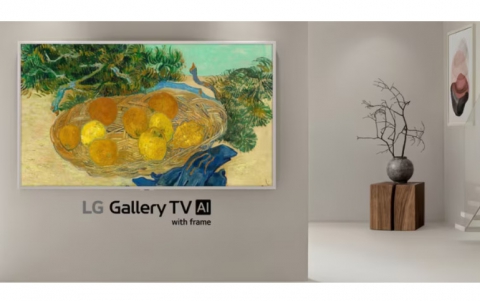
Microsoft Previews Windows 8
At 2011 Computex today, Microsoft showed hardware partners the next version of Windows, internally code-named "Windows 8." The company demonstrated how the new OS is optimized for newer touch-centric hardware, including tablets, while still delivering the connectivity and power of Windows.
The technical demonstration also highlighted the new operating system's ability to work across both x86 and ARM-based architectures, with a variety of early prototypes shown running the new operating system. Microsoft and silicon chip makers AMD, Intel, NVIDIA, Qualcomm and Texas Instruments initially announced plans in January to work together on the next version of Windows.
"Our aim with 'Windows 8' is to make the user experience a natural extension of the device, from the time you turn on your PC through how you interact with the applications you know and love," said Mike Angiulo, corporate vice president of Windows Planning, Hardware and PC Ecosystem at Microsoft. "This represents a fundamental shift in Windows design that we haven't attempted since the days of Windows 95, presenting huge opportunities for our hardware partners to innovate with new PC designs."

Here are a few aspects of the new interface Microsoft showed today:
- Fast launching of apps from a tile-based Start screen, which replaces the Windows Start menu with a customizable, scalable full-screen view of apps.
- Live tiles with notifications, showing always up-to-date information from your apps.
- Fluid, natural switching between running apps.
- Ability to snap and resize an app to the side of the screen, so you can really multitask using the capabilities of Windows.
- Web-connected and Web-powered apps built using HTML5 and JavaScript that have access to the full power of the PC.
- Fully touch-optimized browsing, with all the power of hardware-accelerated Internet Explorer 10.
Microsoft said that Windows 8 isn't just about touch PCs. Although the new user interface is designed and optimized for touch, it works equally well with a mouse and keyboard.
"The new Windows experience will ultimately be powered by application and device developers around the world - one experience across a tremendous variety of PCs. The user interface and new apps will work with or without a keyboard and mouse on a broad range of screen sizes and pixel densities, from small slates to laptops, desktops, all-in-ones, and even classroom-sized displays," said Julie Larson-Green, Corporate Vice President, Windows Experience.
The new user experience also extends to how applications will run on "Windows 8," with controls naturally fitting into the device experience. Developers also will be able to use common Web technologies, such as HTML5 and JavaScript, to create applications for the PC, further easing integration and adoption.
These new Windows 8 apps are full-screen and touch-optimized, and they easily integrate with the capabilities of the new Windows user interface.
To aid developers in building applications for the new operating system, Microsoft formally opened registration for its new developer conference, BUILD. The conference will take place Sept. 13?16, 2011, in Anaheim, Calif. More information and online registration for BUILD is available at http://www.buildwindows.com.
Today's demonstration followed Microsoft's announcements earlier this year about Windows 8 running on System on a Chip (SoC) processors, and its browser engine innovations and significantly increased standards support in Internet Explorer 10. Microsoft said that Windows 8 "extends these innovations and reimagines every level of the Windows architecture - the kernel, networking, storage, devices, user interface - all building on the broadest and richest ecosystem of software, peripherals and devices."
Microsoft did not disclose when Windows 8 will be available. For sure, it would not be this autumn.
Microsoft typically aims for 24 to 36 months between major Windows versions, suggesting a launch date for the next Windows between October 2011 and October 2012.
Seperately, Qualcomm today announced that its upcoming Snapdragon?family of smart mobile processors, including the MSM8960 with integrated 3G/LTE modem, is designed to power devices running the next version of Windows.
The first processor in the Snapdragon family to power devices using the next version of Windows will be the MSM8960, which is sampling this month, followed by the quad-core Snapdragon APQ8064, which is anticipated to sample in early 2012. The Snapdragon family of mobile processors will include dual and quad asynchronous CPU cores that can be independently controlled.
Texas Instruments also announced a new addition to its OMAP 4 family of ARM SoCs, with the 1.8GHz OMAP4470. TI's new chip is powered by a pair of 1.0GHz ARM Cortex-A9 MPCore engines, as well as two, 266MHz ARM Cortex-M3 cores that handle multimedia duties. According to the company, this multi-core structure will enable faster web browsing and more frugal power usage, while putting the OMAP4470 in square competition with quad-core chips like NVIDIA's Kal-El and Intel's latest Sandy Bridge line. The SoC was designed for tablets, netbooks and smartphones running Android, Linux, or the next version of Windows, and can support a max QXGA resolution of 2048 x 1536, and up to three HD displays. There's also a single-core PowerVR SGX544 GPU capable of running Direct X 9, OpenGL ES 2.0, OpenVG 1.1, and OpenCL 1.1. The OMAP4470 is expected to hit the OEM and OED markets in the first half of 2012.



"Our aim with 'Windows 8' is to make the user experience a natural extension of the device, from the time you turn on your PC through how you interact with the applications you know and love," said Mike Angiulo, corporate vice president of Windows Planning, Hardware and PC Ecosystem at Microsoft. "This represents a fundamental shift in Windows design that we haven't attempted since the days of Windows 95, presenting huge opportunities for our hardware partners to innovate with new PC designs."

Here are a few aspects of the new interface Microsoft showed today:
- Fast launching of apps from a tile-based Start screen, which replaces the Windows Start menu with a customizable, scalable full-screen view of apps.
- Live tiles with notifications, showing always up-to-date information from your apps.
- Fluid, natural switching between running apps.
- Ability to snap and resize an app to the side of the screen, so you can really multitask using the capabilities of Windows.
- Web-connected and Web-powered apps built using HTML5 and JavaScript that have access to the full power of the PC.
- Fully touch-optimized browsing, with all the power of hardware-accelerated Internet Explorer 10.
Microsoft said that Windows 8 isn't just about touch PCs. Although the new user interface is designed and optimized for touch, it works equally well with a mouse and keyboard.
"The new Windows experience will ultimately be powered by application and device developers around the world - one experience across a tremendous variety of PCs. The user interface and new apps will work with or without a keyboard and mouse on a broad range of screen sizes and pixel densities, from small slates to laptops, desktops, all-in-ones, and even classroom-sized displays," said Julie Larson-Green, Corporate Vice President, Windows Experience.
The new user experience also extends to how applications will run on "Windows 8," with controls naturally fitting into the device experience. Developers also will be able to use common Web technologies, such as HTML5 and JavaScript, to create applications for the PC, further easing integration and adoption.
These new Windows 8 apps are full-screen and touch-optimized, and they easily integrate with the capabilities of the new Windows user interface.
To aid developers in building applications for the new operating system, Microsoft formally opened registration for its new developer conference, BUILD. The conference will take place Sept. 13?16, 2011, in Anaheim, Calif. More information and online registration for BUILD is available at http://www.buildwindows.com.
Today's demonstration followed Microsoft's announcements earlier this year about Windows 8 running on System on a Chip (SoC) processors, and its browser engine innovations and significantly increased standards support in Internet Explorer 10. Microsoft said that Windows 8 "extends these innovations and reimagines every level of the Windows architecture - the kernel, networking, storage, devices, user interface - all building on the broadest and richest ecosystem of software, peripherals and devices."
Microsoft did not disclose when Windows 8 will be available. For sure, it would not be this autumn.
Microsoft typically aims for 24 to 36 months between major Windows versions, suggesting a launch date for the next Windows between October 2011 and October 2012.
Seperately, Qualcomm today announced that its upcoming Snapdragon?family of smart mobile processors, including the MSM8960 with integrated 3G/LTE modem, is designed to power devices running the next version of Windows.
The first processor in the Snapdragon family to power devices using the next version of Windows will be the MSM8960, which is sampling this month, followed by the quad-core Snapdragon APQ8064, which is anticipated to sample in early 2012. The Snapdragon family of mobile processors will include dual and quad asynchronous CPU cores that can be independently controlled.
Texas Instruments also announced a new addition to its OMAP 4 family of ARM SoCs, with the 1.8GHz OMAP4470. TI's new chip is powered by a pair of 1.0GHz ARM Cortex-A9 MPCore engines, as well as two, 266MHz ARM Cortex-M3 cores that handle multimedia duties. According to the company, this multi-core structure will enable faster web browsing and more frugal power usage, while putting the OMAP4470 in square competition with quad-core chips like NVIDIA's Kal-El and Intel's latest Sandy Bridge line. The SoC was designed for tablets, netbooks and smartphones running Android, Linux, or the next version of Windows, and can support a max QXGA resolution of 2048 x 1536, and up to three HD displays. There's also a single-core PowerVR SGX544 GPU capable of running Direct X 9, OpenGL ES 2.0, OpenVG 1.1, and OpenCL 1.1. The OMAP4470 is expected to hit the OEM and OED markets in the first half of 2012.






















